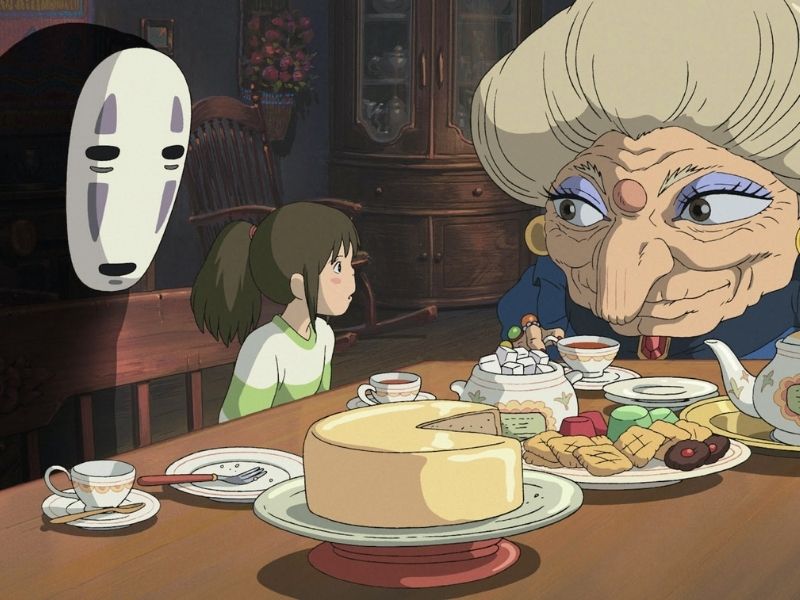Anime has become a significant part of the global media landscape. According to reports published in 2020, the anime industry’s market share is $21 billion due to its increasing popularity among western audiences.
Anime’s elevation in the west could arguably be attributed to films like 1988’s Akira and 1995’s Ghost in the Shell, which are both based on famous Japanese manga. In fact, in 2018, Kanye West claimed that Akira was his “biggest creative inspiration” and said the film was “the greatest animation achievement in history”. The video for his track ‘Stronger’ – taken from 2007’s Graduation – is actually a homage to the film itself.
While movies such as Ghost in the Shell and Akira undoubtedly showed the west that animation wasn’t just for kids (though clearly kid-friendly anime TV shows like Dragonball Z and Sailor Moon also contributed), there is one particular animation studio that perhaps single-handedly promoted anime to its current status. It will be unsurprising to reveal that studio to be Studio Ghibli.
Studio Ghibli was founded in 1985 by directors Hayao Miyazaki and Isao Takahata, following the success of 1984’s Nausicaa of the Valley of the Wind, which Miyazaki directed. Miyazaki and Takahata directed and wrote most of the Ghibli films, including the first Ghibli release, 1986’s Castle in the Sky, as well as the beloved My Neighbor Totoro (1988), Pom Poko (1994) and Princess Mononoke (1997).
However, amongst all these anime films, there lies one Ghibli film that arguably stands above the rest. One that draws you in, one that friends recommend to other friends who are unversed in or sceptical of anime. That film is 2001’s Spirited Away, the only Japanese anime to win the Oscar for Best Animated Feature, although Miyazaki refused to attend the award ceremony because he vehemently disagreed with America’s involvement in the Iraq war.
Spirited Away tells the story of Chihiro, a young girl who, when moving house with her parents, is drawn into the world of the ‘Kami’ (the spirits of Japanese Shinto folklore). Chihiro’s parents are turned into pigs by the spirits during a stop on their journey after revealing their human greed when eating food in an empty restaurant that is clearly not theirs. In order to save her parents, Chihiro must take a job in the spirit bathhouse to find out exactly why they have been transformed.
The story is fascinating and at once pulls you in, managing to accomplish many creative achievements simultaneously; it’s funny, magical, sometimes scary, and often heart-warming. Spirited Away captures what any fantasy film worth its salt ought to, which is to take us to a world far unlike our own whilst still managing to comment on our world and the plight and traits of the human race.
In Chihiro, Miyazaki created an ordinary protagonist with whom the audience can sympathise. He also once stated, “It’s not a story in which the characters grow up, but a story in which they draw on something already inside them, brought out by the particular circumstances. I want my young friends to live like that, and I think they, too, have such a wish.” Evidently, Miyazaki wanted to create a rich and vibrant fantasy for children to get lost in. Still, Spirited Away is also an intellectually stimulating film, with its comments on human adult greed compared to the innocence of childhood. It provides ample room for thought.
Yet, it is more than just the story that contributes to Spirited Away being Ghibli’s best film, as well as its constant reference to Western culture and media. The animation is absolutely unrivalled. This author’s niece was shell-shocked when I told her the film had, in fact, been drawn by hand when we watched it together. Compared to its predecessors, this Ghibli film achieved a visual focus and clarity that simply hadn’t been achieved in animation before its release. So too does the film’s soundtrack dazzle and inspire; composed and conducted by Miyazaki’s long-time collaborator Joe Hisaishi, it received the Tokyo International Anime Fair Award for Best Music in the Theatre Movie category.
The scenery of Spirited Away is absolutely breathtaking, as are the interiors of the bathhouse. The animators and art directors, without doubt, succeeded in creating eternally iconic characters such as the spirit No-Face and the witch Yubaba, as they had done with My Neighbor Totoro’s titular character.
Ultimately, Spirited Away is a film that shows us that even though we live in what seems like an ordinary world, spectacular things lay in wait for us behind closed doors. It tells us to live our lives as though we are constantly on the precipice of a discovery that will change them. It allowed us to confront a downright weird world that did not make sense to our usual perceptions. It bordered at times on the fearful, yet through Chihiro, we faced that fear and, alongside her, grew as people.
